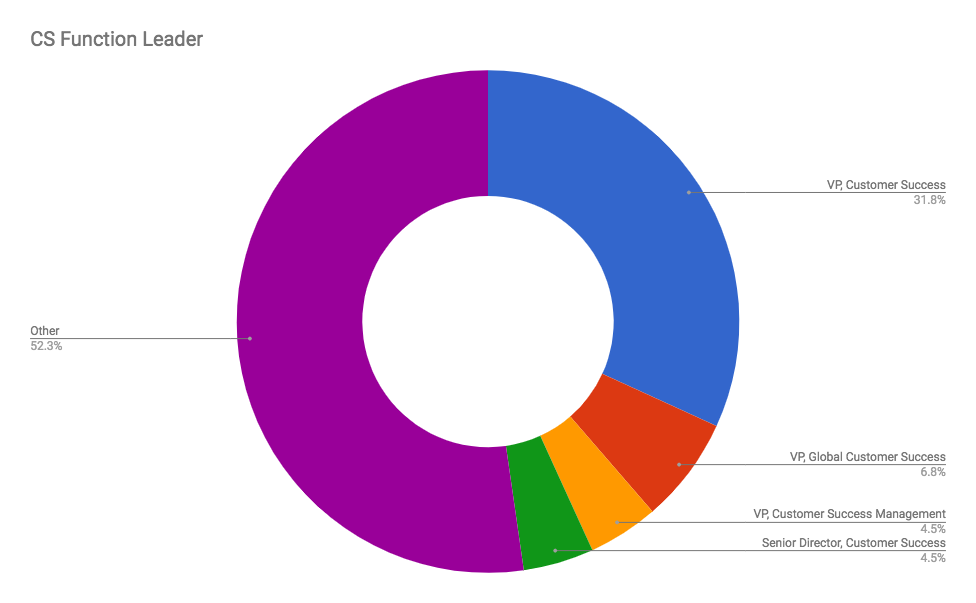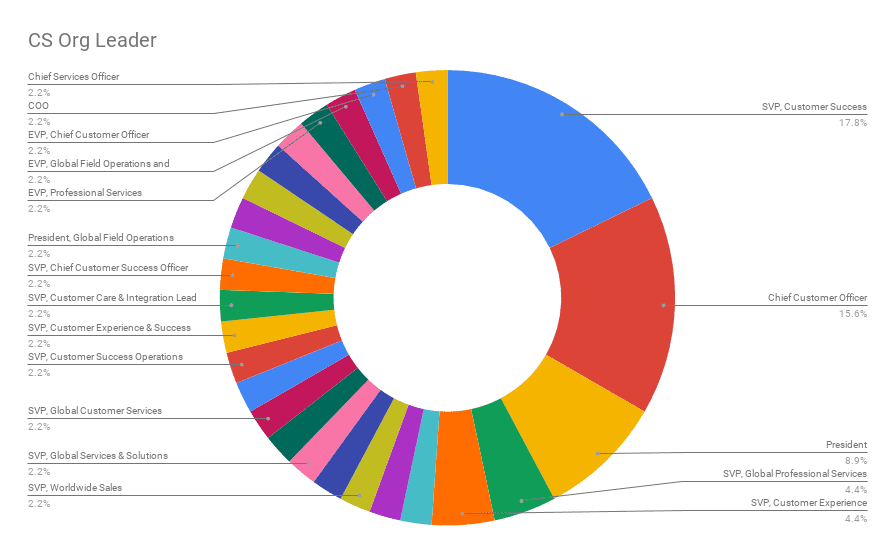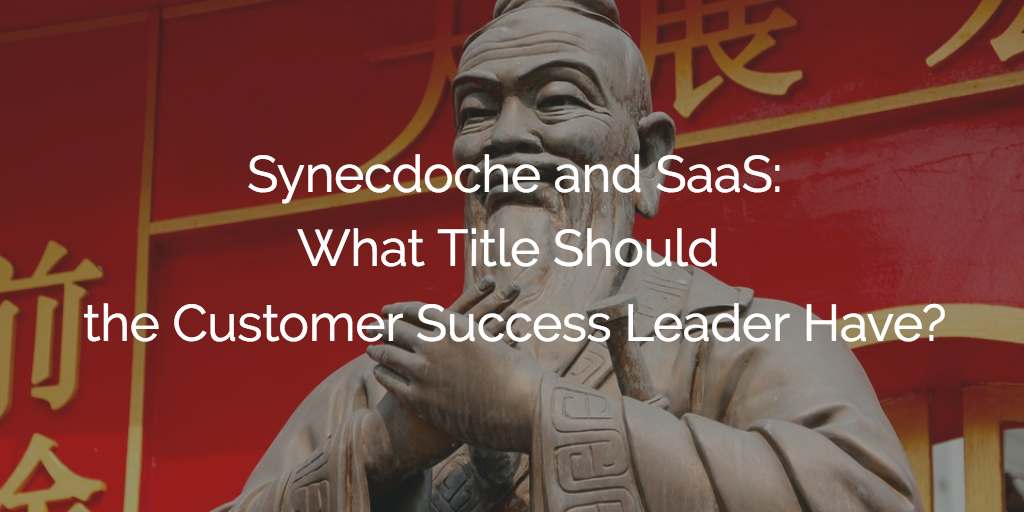“What’s in a name? That which we call a rose by any other name would smell as sweet.”
– William Shakespeare, Romeo and Juliet (II, ii, 1-2)
“If names be not correct, language is not in accordance with the truth of things. If language be not in accordance with the truth of things, affairs cannot be carried on to success.”
– Lao-Tse, The Analects of Confucius (Chapter 13)
A while back, I wrote about the cognitive dissonance we have between the way we think about Customer Success and the way we talk about it—specifically, the names and titles we use. As the two quotes above illustrate, there are a lot of ways to think about names and what they mean.
And the reality is that when I speak with leaders of “post-sales” in B2B businesses, one of the most candid, often “hushed” questions I get (especially over a glass of wine) is, “What should my title be?”
If this were a classic tech blog post, I would give you about 1,000 words leading up to the provocative conclusion that “it depends.”
But we decided to strive for more and make Confucius proud. We decided we needed evidence.
So we collected data from Bessemer Venture Partners’ Public Cloud Index on the titles and responsibilities for the functional “Customer Success” leader and the overall head of the “post-sales” organization and there are four key takeaways.
1. Hire a VP of Customer Success
When we researched the org charts of the BVP Cloud Index, we found that 44 out of the 50 companies employed a functional CS leader. The other six may have an equivalent leader, but we weren’t able to identify them with certainty, so we left them off. Here’s a graph of those 44 company’s titles.

This chart is awesome because it’s evidence of two things:
- 88% of the largest (by market cap) publicly-traded cloud companies employ a head of CS.
- The most often-used title for that person by far is Vice President, Customer Success.
That big purple slice (titles that only appear once on the Index) might lead you to believe the title fragmentation is severe, but there are only three non-Customer Success-related titles in it. (For example, two of the titles under “Other” are “VP Customer Success Americas” and “SVP Customer Success.”) And only nine of the “Others” are not VP-level or above.
Key takeaway: Every SaaS company of meaningful size should have a VP or VP-level person in charge of Customer Success. And many non-SaaS companies should strongly consider doing so as well.
2. Consolidate “Post-Sales” Under a Chief Customer Officer
45 companies on the Index have an executive “umbrella” leader of the “post-sale” teams. I’m using “post-sale” as a catch-all here, even though I really don’t like the term. Full disclosure: we’ve used the term “post-sales” in the past both in content and in marketing outreach as well as in internal and external conversations. If we don’t really like it, why do we use it?
Post-sales is well-understood and all-encompassing, but it’s also dated, and doesn’t truly reflect the mission of the function. It implicitly centers the sale as the most important moment in the customer lifecycle, which is a very inside-out way to look at the customer’s journey. It’s passive. It doesn’t include a mission or mandate, which bolsters the misperception that once money has changed hands, the customer is just a cost center, not a precious resource.
In addition, in modern businesses where the customer has power, the lines between pre- and post-sale are blurred. In a way, a customer is always in pre-sales—and post-sales, for that matter! Stop me or I’ll go on about how this is just like quantum superposition…
Getting back to our research, you can see that SVP Customer Success and Chief Customer Officer (CCO) are present in 15 out of 45 companies. Again, the missing five out of 50 probably have a similar position, but we left them off in the absence of certainty.
If you group CCOs and anyone with an executive level title and the words “Customer Success” in it, you end up with almost half the titles of these organizational leaders—48.9%. That means 90% of the world’s most successful SaaS companies have consolidated “post-sales,” but none of them are using the words “post-sales.” The most-used name is “Customer Success.”
Key takeaway: Most SaaS companies are consolidating all of “post-sales” into one department. The most common titles are SVP Customer Success and CCO.
3. Customer Success > Customer Success Management
So why is Customer Success not already the de facto term? I think people sometimes find it confusing because it’s a synecdoche.
In case you’re not familiar with the word “synecdoche,” it just means when a part of a whole and the whole itself are referred to interchangeably. Like if I said, “Golden State won the championship,” I’m obviously talking about the basketball team, the Golden State Warriors, not the entire state of California. It’s a part referred to by the word for the whole.
Likewise, when you refer to “Customer Success” at your company, you may be talking about a VP Customer Success reporting up to a Senior VP Customer Success, which is actually the most common hierarchy on the BVP Cloud Index, with three total instances.
I won’t include a graph from our data to support this point because it would look like this:

Suffice to say, we researched each hierarchical relationship between CS functional leader and the CS organizational leader and found that of 45 companies on the Index, there were 41 unique combinations of titles.
You can see how it gets confusing!
On the other hand, other departments are synecdoches as well. At the top of the Sales team there’s the SVP Sales, and underneath you have VP Sales (North America), VP Sales (Operations), VP Sales (Engineering), and so on. People intuitively understand that the Sales org leader is responsible for a much broader strategy. But in Customer Success, there’s unfortunately still a lingering mentality that CS and CSM aren’t synecdoche, they’re synonymous.
Key takeaway: To combat the confusion, we need to emphasize the broader scope of Customer Success beyond just Customer Success Management.
4. Customer Success vs. Customer Outcomes
Most companies now recognize the “adapt-or-die” imperative to proactively ensure the health and success of their scarcest resource—their customers. But they also know it’s not enough to spin up a self-contained CSM team with a limited scope of responsibilities (retention, adoption, expansion, etc.) and expect it to move the needle significantly without true cross-functional buy-in to a company-wide commitment to Customer Success.
The positive outcomes necessary for a customer’s success are driven by every interaction your company has with that customer, from sales calls to services projects to support requests to everyday product usage and beyond. Each interaction needs to be unified under a common strategic goal and toward an ideal client journey, and it needs to be operational and scalable.
That’s why we renamed CSM to “COM”—Client Outcomes Manager—in our internal organization at Gainsight.
It limits the scope of our COMs to be laser-focused on making sure our customers are achieving their desired outcomes with Gainsight. But it also implicitly recognizes that the overall success of the customer is truly cross-functional. Support, Services, Product, Marketing, etc.—it’s all of our job to make our customers successful.
Key takeaway: Consider relabeling the CSM job to be something more specific (e.g., Client Outcomes Manager at Gainsight) so people realize Customer Success is cross-functional.
So, what’s in a name?
You might be asking, “Is this even a problem?” I see two main reasons why it is, and I couldn’t help representing them as math formulae (it’s kind of my thing):
1. Title Creep = Mission Creep
When your title is, say, EVP Professional Services but you’re actually responsible for the entire customer journey, why does your title only encompass part of that journey? More importantly, are your various post-sales teams united under the mission of making customers successful? Do other organizations (i.e. Sales) understand the full scope of your mandate?
Sometimes this “title creep” is often a byproduct of a sort of “mission creep” that happens when companies implement a siloed CS team and then try to figure out who that team should report to at the executive level. Maybe this executive is a VP Sales who maybe becomes an SVP Sales and Customer Success. If this executive ends up hyper-focused on renewal and expansion without a strategy for firstly operationalizing overall Customer Success across all client-facing teams, they will certainly struggle to meet their numbers.
2. Standardization > Fragmentation
When we were building out our Elements framework of people, process, and technology, we did so with a deliberate eye towards becoming more prescriptive. We know there’s a tendency to view each client base at each company as fundamentally unique, but the danger is losing sight of the similarities. Customer Success as a discipline is mature enough that evidence-based best practices can be applied at any company no matter how unique it is.
Fragmentation is the enemy of sharing knowledge. The more we can speak a common language in business as in technology, the more modular our solutions can be. The solutions that are flexible enough to adapt at the widest variety of business models and yet rigid enough to be scalable and effective will naturally spread as the evidence proves them. The same goes for titles! Not only is it good to “rectify the names” as Confucius said, it’s actually inevitable.
I’d love to hear your thoughts on standardizing titles in Customer Success. Leave a comment below and we’ll get the conversation going!

